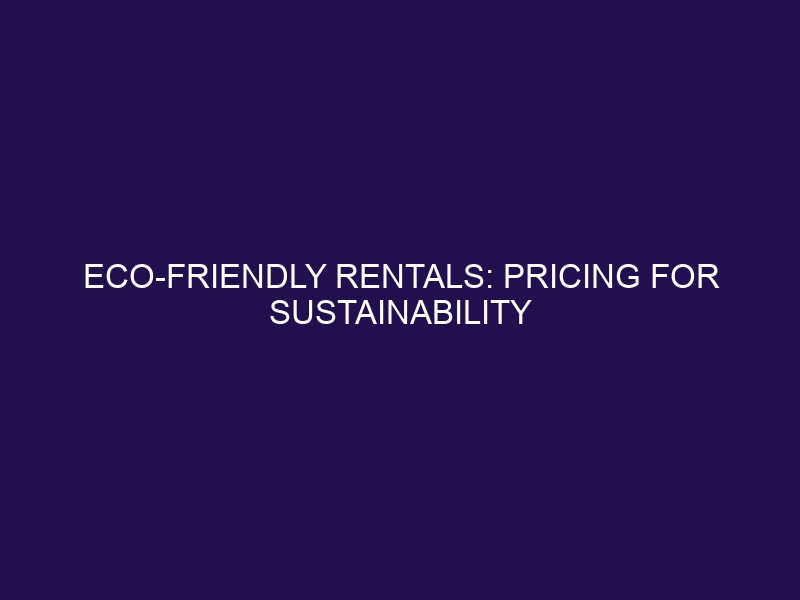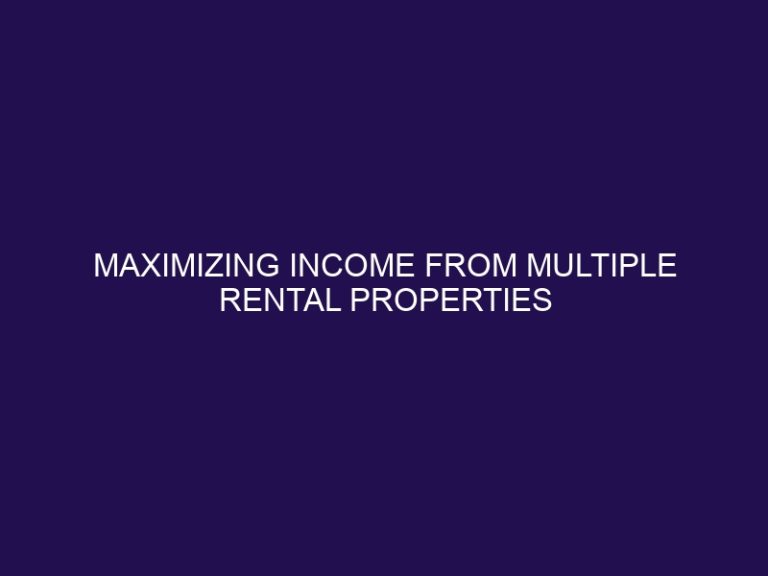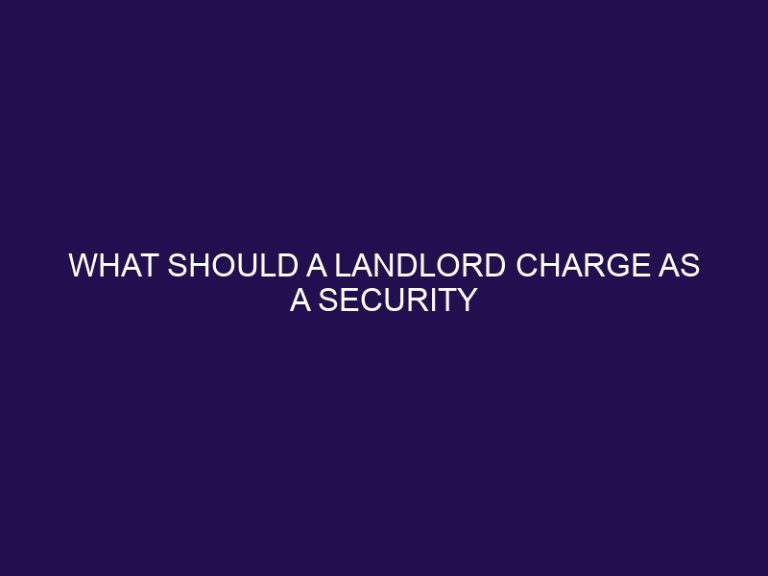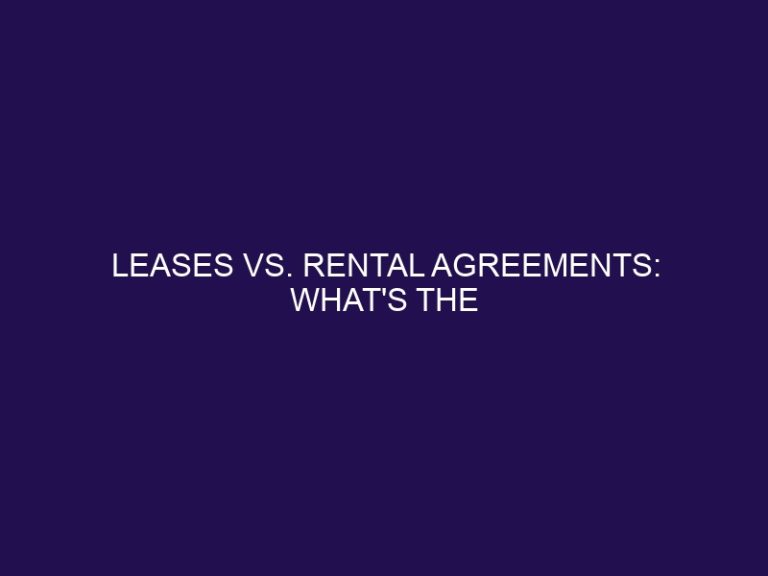Eco-Friendly Rentals: Pricing for Sustainability
Eco-friendly rentals, also known as sustainable or green rentals, are properties that have been designed, constructed, and operate with minimal impact on the environment. These rentals utilize sustainable practices, materials, and technologies to reduce their carbon footprint and promote a healthier living environment.
In recent years, there has been a growing demand for eco-friendly rentals as more people become environmentally conscious and want to make a positive impact.
So, why should you choose eco-friendly rentals? Here are three reasons:
- Reduce Carbon Footprint: By choosing an eco-friendly rental, you are reducing your contribution to greenhouse gas emissions, helping to mitigate the effects of climate change.
- Support Sustainable Practices: Eco-friendly rentals use sustainable materials and technologies, promoting a more sustainable way of living.
- Save Money in the Long Run: While eco-friendly rentals may have a higher upfront cost, they can save you money in the long run through lower energy and water bills.
The pricing of eco-friendly rentals can vary significantly depending on several factors:
- Location: Eco-friendly rentals in urban areas or popular tourist destinations may have higher prices due to high demand.
- Building Materials: The use of sustainable building materials, such as bamboo or recycled materials, can increase the cost of construction and in turn, affect the rental price.
- Energy Efficiency: Rentals with energy-efficient appliances and renewable energy sources, such as solar panels, may have a higher price but can save money on utility bills.
- Water Conservation: Rentals with water-efficient fixtures and landscaping can help reduce water bills, but the initial cost may impact rental prices.
Landlords can make their rentals more eco-friendly by implementing some of these practices:
- Use Sustainable Building Materials: Opt for materials like bamboo, reclaimed wood, or recycled materials in construction and renovation.
- Install Energy-Efficient Appliances: Energy Star-rated appliances can reduce energy consumption and save money in the long run.
- Implement Water Conservation Measures: Install low-flow fixtures, collect and reuse rainwater, and use drought-resistant plants for landscaping.
Examples of eco-friendly rentals include:
- Solar-powered homes: These homes use solar panels to generate electricity, reducing or eliminating their reliance on the grid.
- Green apartment buildings: These buildings are designed and operated with sustainable practices, such as energy and water conservation, recycling, and green roofs.
- Tiny homes: These small, compact homes are often built with sustainable materials and rely on minimal energy usage.
- Off-grid cabins: These rentals are completely self-sufficient, utilizing renewable energy sources and water conservation measures.
Renters can find eco-friendly rentals by:
- Searching online rental listings for keywords like “eco-friendly” or “green.”
- Contacting local green building organizations for recommendations.
- Attending eco-friendly home shows or fairs, where landlords and property managers showcase their sustainable rentals.
What Are Eco-Friendly Rentals?
What Are Eco-Friendly Rentals? These are accommodations that prioritize sustainability by utilizing energy-efficient appliances, eco-friendly cleaning products, and often have recycling programs. Additionally, these rentals may feature renewable energy sources like solar panels or incorporate green building materials to minimize environmental impact.
Why Choose Eco-Friendly Rentals?
As the world becomes increasingly aware of the environmental impact of our daily actions, more and more people are looking for ways to incorporate sustainability into their lives. One way to do so is by choosing eco-friendly rentals for their accommodation needs. In this section, we will discuss the various reasons why choosing eco-friendly rentals can be beneficial, including reducing your carbon footprint, supporting sustainable practices, and even saving money in the long run.
1. Reduce Carbon Footprint
- Use energy-efficient appliances and lighting to help reduce your carbon footprint.
- Opt for renewable energy sources like solar power to further decrease your carbon footprint.
- Reduce, reuse, and recycle to minimize waste and lower your carbon footprint.
2. Support Sustainable Practices
- Reduce, reuse, and recycle resources to minimize environmental impact.
- Adopt renewable energy sources such as solar or wind power.
- Support sustainable practices in the supply chain by promoting ethical and fair trade.
3. Save Money in the Long Run
- Invest in energy-efficient appliances to reduce long-term utility costs and save money in the long run.
- Implement water conservation measures to lower water bills over time and save money in the long run.
- Use sustainable building materials to decrease maintenance and repair expenses and save money in the long run.
What Factors Affect the Pricing of Eco-Friendly Rentals?
When it comes to eco-friendly rentals, there are many factors that can influence the pricing of these sustainable living spaces. In this section, we will discuss the various elements that play a role in determining the cost of eco-friendly rentals. From the location of the rental to the types of building materials used, as well as the energy efficiency and water conservation measures in place, each of these factors can impact the pricing of these environmentally conscious living options. Let’s take a closer look at how each of these elements contributes to the overall cost of eco-friendly rentals.
1. Location
- Consider the location’s proximity to public transportation for an eco-friendly option.
- Assess the availability of biking or walking paths for a more sustainable community.
- Evaluate the presence of green spaces and parks to promote a healthy environment.
In the early 1900s, the city of Lubeck, Germany, implemented a visionary city plan that prioritized green spaces and public transportation. This forward-thinking approach to urban development has made Lubeck a prime example of sustainable city living.
2. Building Materials
- Choose sustainable building materials like reclaimed wood, bamboo, or recycled metal.
- Opt for materials with low environmental impact, such as FSC-certified wood or recycled glass countertops.
- Consider using eco-friendly insulation like sheep’s wool, cellulose, or recycled denim.
- Use non-toxic paints, adhesives, and finishes to minimize indoor air pollution.
Did you know? Reclaimed wood can reduce carbon emissions by preventing new trees from being cut down.
3. Energy Efficiency
- Perform an energy audit to evaluate current energy usage.
- Upgrade to energy-efficient appliances and lighting to increase energy efficiency.
- Enhance insulation and seal air leaks to minimize energy waste.
- Utilize programmable thermostats to maximize energy efficiency.
4. Water Conservation
- Fix leaks promptly to prevent water wastage.
- Install low-flow faucets and showerheads to reduce water usage.
- Utilize water-efficient appliances like dishwashers and washing machines.
- Implement rainwater harvesting systems to collect and reuse water.
In 2001, Singapore launched a comprehensive water conservation program, which has achieved remarkable success in reducing water consumption and increasing public awareness.
How Can Landlords Make Their Rentals More Eco-Friendly?
As the importance of sustainability and eco-friendliness continues to grow, many landlords are looking for ways to make their rental properties more environmentally friendly. In this section, we will discuss three key ways that landlords can achieve this goal: using sustainable building materials, installing energy-efficient appliances, and implementing water conservation measures. By incorporating these practices into their rental properties, landlords can not only contribute to a greener future but also potentially save on operating costs.
1. Use Sustainable Building Materials
- Opt for renewable materials such as bamboo, reclaimed wood, or recycled metal.
- Choose non-toxic, low-impact materials to promote a healthier indoor environment.
- Consider using locally sourced materials to minimize transportation emissions.
When incorporating sustainable building materials, take into account their lifecycle environmental impact and look for certifications such as LEED to create a more eco-friendly rental.
2. Install Energy-Efficient Appliances
- Assess energy consumption: Identify and prioritize replacement of high-energy-consuming appliances.
- Research energy-efficient models: When looking for new appliances, consider those with ENERGY STAR ratings or a high Energy Efficiency Ratio (EER) for air conditioners.
- Consider lifecycle cost: Make an informed investment decision by evaluating the initial cost versus long-term energy savings.
- Hire professional installation: Maximize the efficiency of new appliances by ensuring proper installation by a professional.
3. Implement Water Conservation Measures
- Install low-flow faucets and showerheads to implement water conservation measures.
- Use water-efficient toilets and appliances to save water.
- Collect and reuse rainwater for non-potable purposes as part of water conservation measures.
- Implement landscaping with drought-resistant plants and drip irrigation systems to conserve water.
- Regularly check for and repair leaks to ensure effective water conservation measures.
What Are Some Examples of Eco-Friendly Rentals?
In recent years, there has been a growing trend of eco-friendly rentals that prioritize sustainability and environmental consciousness. In this section, we will explore some examples of these types of rentals, including solar-powered homes, green apartment buildings, tiny homes, and off-grid cabins. Each of these options offers unique benefits for both the environment and the renters, and we will discuss how they contribute to a more sustainable way of living.
1. Solar-Powered Homes
- Consider installing solar panels on your roof or in your yard to generate renewable energy for your home.
- Maximize solar power utilization by using energy-efficient appliances and lighting.
- Implement smart home systems to optimize energy consumption and further reduce utility bills.
Did you know? Solar-powered homes can reduce utility bills by up to 80%.
2. Green Apartment Buildings
Eco-friendly design, energy-efficient systems, and sustainable materials are key features of green apartment buildings. These buildings often include green roofs, efficient insulation, and utilize renewable energy sources like solar panels. Their main focus is on reducing environmental impact, providing renters with an eco-conscious living environment.
3. Tiny Homes
- When designing tiny homes, it is important to consider space efficiency and layout.
- Maximize space by utilizing multifunctional furniture and storage solutions.
- Incorporate energy-efficient and sustainable materials for construction to make the most of your tiny home.
- Reduce energy consumption by optimizing natural light and ventilation.
4. Off-Grid Cabins
- Location: Seek off-grid cabins in remote areas for minimal environmental impact.
- Energy Source: Prioritize cabins powered by solar, wind, or hydroelectricity.
- Sustainable Design: Look for cabins constructed using eco-friendly materials and techniques.
- Water Systems: Choose off-grid cabins with rainwater collection and filtration systems for sustainable water usage.
How Can Renters Find Eco-Friendly Rentals?
As sustainability becomes increasingly important in our daily lives, more and more people are seeking eco-friendly rental options. But where can renters find these environmentally conscious homes? In this section, we will explore three ways renters can locate eco-friendly rentals. From searching online rental listings to attending eco-friendly home shows, there are various avenues to finding a sustainable place to call home. Let’s dive in and discover how to find eco-friendly rentals in your area.
1. Search Online Rental Listings
- Utilize reputable rental websites like Zillow or Apartments.com to search for available rentals.
- Filter search results for eco-friendly features such as solar panels or energy-efficient appliances to find environmentally-friendly options.
- Contact property managers directly to inquire about their green initiatives and their commitment to sustainability.
True story: I once found a beautiful eco-friendly apartment through an online listing and connected with the landlord who shared their commitment to sustainability.
2. Contact Local Green Building Organizations
- Conduct online research to find green building organizations in your local area.
- Contact these organizations through email or phone to inquire about eco-friendly rental options.
- Attend events or workshops organized by these organizations to network and gather information about sustainable rental properties.
3. Attend Eco-Friendly Home Shows
- Research upcoming eco-friendly home shows in the local area.
- Attend these events to discover eco-friendly rental options.
- Engage with landlords, builders, and green living experts for valuable insights and information.
Summary
To sum up, eco-friendly rentals prioritize sustainability while still providing comfort and style. They are the perfect option for environmentally conscious travelers who want to reduce their carbon footprint and also have a unique and responsible lodging experience.
Frequently Asked Questions
What are some principal value driving parts of a sustainable rental property?
The principal value driving parts of a sustainable rental property include energy-efficient technologies, streamlined features, and increased comfort for tenants. These features not only contribute to a healthier and more comfortable living space but also have financial benefits, such as lower utility costs and the ability to attract more tenants.
What is the market demand for sustainable rentals?
The market demand for sustainable rentals is steadily increasing due to a growing market of eco-conscious tenants and a rising political agenda for sustainability. According to the European Cities SDG Index, cities with high sustainability rankings also have higher economic growth and education quality, making sustainability a priority for many market participants.
How much do sustainable rentals typically cost?
The average cost of a sustainable rental property varies depending on location and the specific eco-friendly features included. However, according to existing literature, the price premium for certified green buildings can range from below 50% to as high as 179% more than conventional buildings.
What are some regulatory requirements for creating a sustainable rental property?
Regulatory requirements for sustainable rentals can vary by location, but some common regulations include using sustainable building materials, meeting energy efficiency standards, and obtaining green certifications. It is important to research and comply with any relevant regulations in the area where the rental property is located.
How can landlords save money by creating a sustainable rental property?
Landlords can save money by creating a sustainable rental property through lower utility costs and potential tax incentives and rebates for implementing eco-friendly features. In addition, sustainable properties often have a higher market value, allowing landlords to charge higher rents in the sustainable housing segment.
How can tenants contribute to sustainability in a rental home?
Tenants can contribute to sustainability in a rental home by being mindful of their energy and water usage, properly maintaining the eco-friendly features in the rental, and participating in sustainable practices, such as using public transportation or carpooling. Their actions can also contribute to the overall sustainability and living comfort of the rental property.







